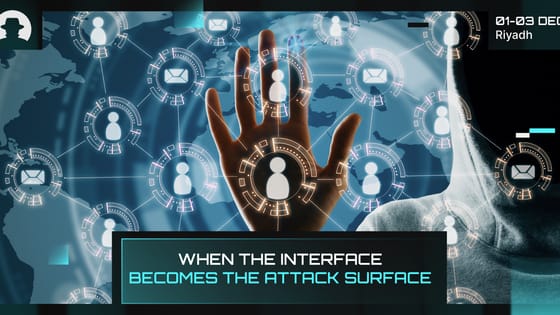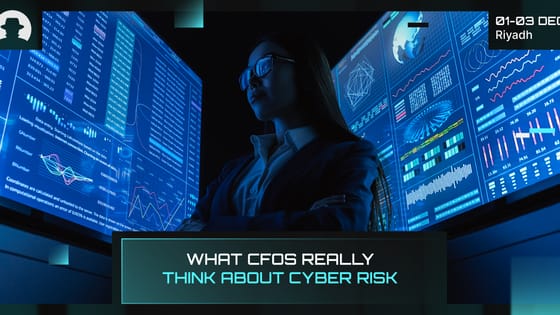
When the interface becomes the attack surface
Three recent campaigns (Tsundere, Matrix Push C2, and Sturnus) show attackers shifting command-and-control and data theft into places we treat as harmless UX plumbing.
Read More
AI-powered cybersecurity platforms are becoming increasingly prevalent across industries this year. Actually, we wrote about them recently – you can find that article here.
The benefits are numerous: from streamlining operations and detecting vulnerabilities more efficiently, to lowering the cost of boosting cyber resilience. But one of the benefits that has real potential to drive greater cyber resilience worldwide is the relative ease-of-use of these platforms.
Until now, organisations needed technical experts to manage complex cybersecurity systems; but platforms built with AI enable people without that deep technical skill to operate cybersecurity systems effectively and efficiently.
Recent advancements point to the possibility that in the not-too-distant future, some software could be created without any coding at all – and already, no-code app builders are rapidly being launched to market.
Tools like GitHub's Copilot, powered by OpenAI's Codex, can autocomplete code snippets or generate entire functions based on simple prompts. This tech allows developers to focus on higher-level problem-solving rather than spending hours on routine coding tasks. And as noted by the Council on Foreign Relations, while these systems are still in their infancy, they hold enormous potential for the tech economy and businesses that rely on the high-demand, short-supply engineering workforce.
This shift has led to the concept of ‘vibe coding’, where AI handles much of the coding workload and gives smaller teams the capacity to handle work that would traditionally have needed more people. Speaking to Business Insider, Garry Tan (CEO of Y Combinator) predicted that vibe coding will revolutionise the startup industry.
We know that organisations are increasingly adopting AI to enhance their security operations. According to research by IBM, 64% of executives have implemented AI for security capabilities, with an additional 29% considering implementation. These AI systems assist in threat detection, incident response, and vulnerability management, effectively acting as force multipliers for security teams.
This is happening across a wide range of industries, but some are leading the charge – with financial institutions particularly likely to leverage AI to boost their security posture. JPMorgan Chase reported that an AI coding tool has increased the productivity of its software engineers by up to 20% – because it allows them to focus more on high-value projects.
Along with this rise in potential comes the rise of risk. Cybercriminals are adopting AI tech just as quickly as cybersecurity practitioners. One recent survey revealed that 80% of bank cybersecurity executives in the US feel they can’t keep up with AI-powered cybercriminals – so we need constant, relentless innovation in defence strategies.
And bringing non-technical users into the fight could be key to protecting communities and organisations against the sheer volume of cyber threats we face today.
AI in cybersecurity can empower individuals without extensive technical knowledge. AI-driven platforms can automate complex processes such as threat detection and response, for example, so users can manage high-level security systems without years of technical training and exploration.
More and more cybersecurity leaders emphasise that this democratisation is critical in addressing the cybersecurity talent shortage – because organisations don’t have access to enough technical talent to maintain robust security operations without non-technical support.
At Black Hat MEA 2024, we asked Craig Jones (Immediate Past Director of Cybercrime at Interpol) which new or emerging technologies were most exciting to him in cybersecurity. He said:
"I’m going to remove the technology from that question – I’m going to look at the people here.”
“What’s exciting me now is the use of technology by the people. It’s not always that technical now – you can do some great work using the technology, you’re not necessarily understanding it, but you know it makes you work more effectively and more efficiently as well."
As technology continues to advance, automation becomes the norm, and low or no-code platforms become increasingly accessible, cybersecurity needs to shift its focus to people over tech.
While AI makes it possible for non-technical users to operate sophisticated cybersecurity systems, it's essential to implement continuous monitoring to make sure the technology remains effective and unbiased.
Craig also highlighted the need for data integrity and verification, stating, “But we do need to put those checks and balances. I put my public service head on here – how good is the data, where is the data coming from, how do we verify it.”
Because AI systems rely on data inputs to function – so we have to constantly verify and evaluate the quality and sources of the data fed to it.
The integration of AI into coding and cybersecurity is still evolving. AI can automate a significant number of tasks today, but human oversight remains essential – especially in complex decision-making processes. As AI continues to mature, we can anticipate more sophisticated tools that further simplify cybersecurity operations, making them more accessible to non-experts.
But this also necessitates a never-ending focus on education and the development of best practices to ensure that AI is used responsibly and effectively.
Register now to join the global cybersecurity community in Riyadh this November.
Join the newsletter to receive the latest updates in your inbox.

Three recent campaigns (Tsundere, Matrix Push C2, and Sturnus) show attackers shifting command-and-control and data theft into places we treat as harmless UX plumbing.
Read More
CFOs say they’re confident in their organisation’s ability to handle cyber risk – and more than half plan to outsource cybersecurity expertise.
Read More
From fake celebrity endorsements to cloned voices in mobile scams, 2025 proved that deepfakes are now a real business and consumer risk.
Read More